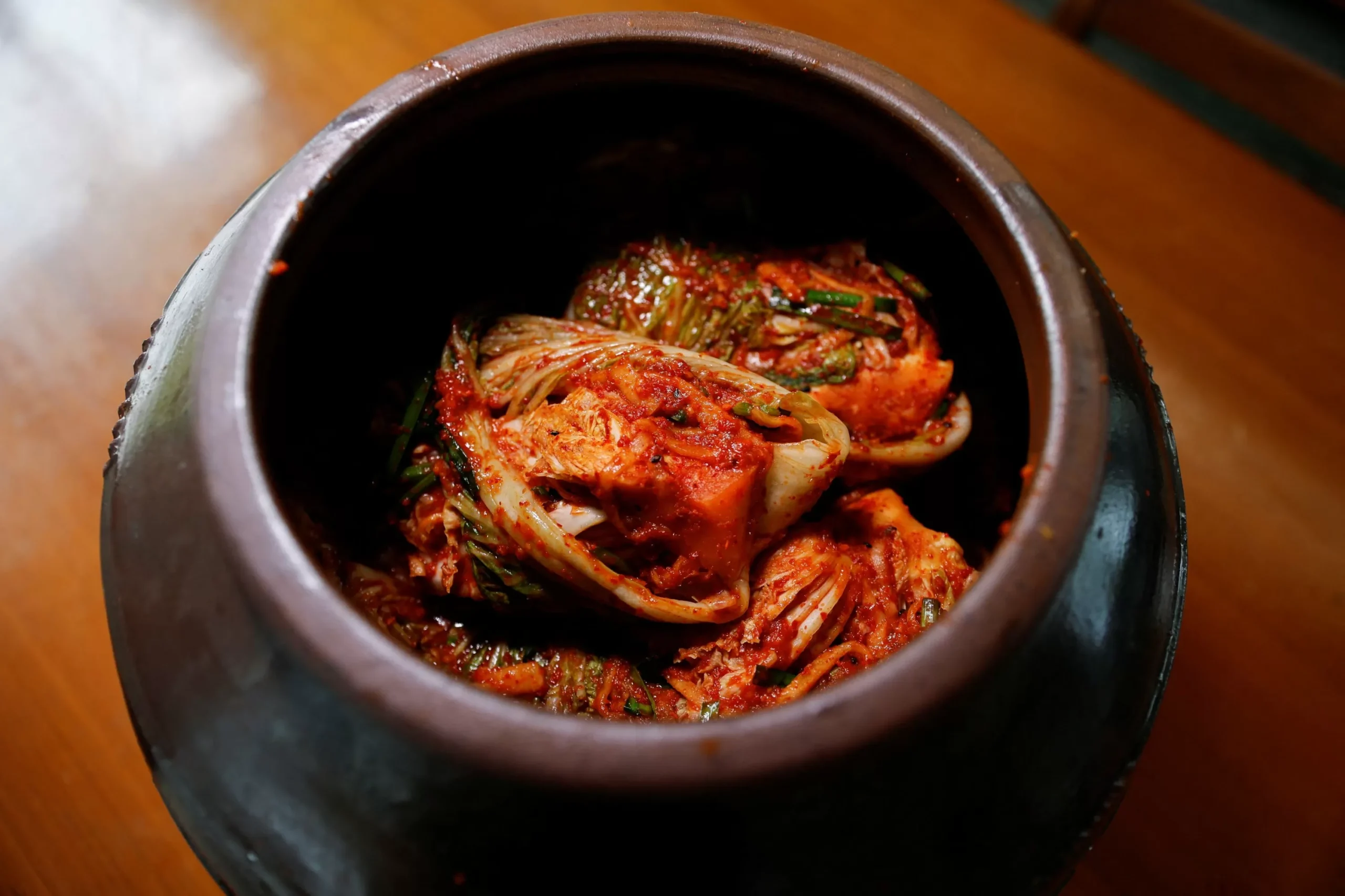South Korea’s famous kimchi, a staple in Korean cuisine, is facing a new threat – climate change. Scientists, farmers, and manufacturers are all sounding the alarm, warning that the quality and quantity of the napa cabbage used to make kimchi is declining due to the changing climate.
Kimchi, a fermented vegetable dish, has been a part of Korean culture for centuries. It is not only a delicious side dish, but also a source of pride for Koreans. However, with the changing climate, the napa cabbage, the main ingredient in kimchi, is struggling to grow and thrive.
According to a recent study by the Korea Rural Economic Institute, the average temperature in South Korea has risen by 1.7 degrees Celsius over the past century. This increase in temperature has led to shorter and milder winters, which are crucial for the growth of napa cabbage. The cabbage needs a certain amount of cold weather to develop its signature crispness and sweetness, but with the warmer temperatures, it is becoming increasingly difficult to achieve this.
As a result, farmers are facing challenges in producing high-quality napa cabbage. The warmer temperatures have also led to an increase in pests and diseases, further affecting the quality of the cabbage. This has resulted in a decrease in the supply of napa cabbage, making it more expensive for farmers to grow and for manufacturers to purchase.
The decline in the quality and quantity of napa cabbage has also affected the taste of kimchi. Kimchi made with lower quality cabbage lacks the traditional tangy and spicy flavor that Koreans have come to love. This has caused concern among manufacturers, who fear that the declining quality of napa cabbage will affect the overall taste and popularity of kimchi.
To combat these challenges, scientists and farmers are working together to find solutions. One approach is to develop new varieties of napa cabbage that can withstand the changing climate. These new varieties are being bred to have a shorter growing period and to be more resistant to pests and diseases. This will not only ensure a stable supply of napa cabbage but also maintain the quality of kimchi.
In addition, farmers are also implementing new farming techniques to adapt to the changing climate. For example, some farmers are using shade nets to protect the cabbage from the scorching sun, while others are using irrigation systems to provide the necessary moisture for the cabbage to grow.
The government is also taking action to support farmers and manufacturers. The Ministry of Agriculture, Food and Rural Affairs has announced plans to invest in research and development to develop new varieties of napa cabbage. They are also providing financial assistance to farmers to help them adopt new farming techniques.
Despite the challenges, there is still hope for the future of kimchi. The Korean government has designated kimchi as a national dish and is determined to preserve its traditional taste and quality. This has led to increased efforts to protect the napa cabbage and ensure its sustainability for future generations.
Moreover, the decline in the quality of napa cabbage has also sparked innovation in the kimchi industry. Manufacturers are experimenting with new ingredients and techniques to create kimchi that can withstand the changing climate. Some are even using alternative vegetables, such as radishes and cucumbers, to make kimchi.
The decline in the quality and quantity of napa cabbage may be a cause for concern, but it has also brought attention to the importance of preserving traditional foods and adapting to the changing climate. With the efforts of scientists, farmers, and manufacturers, there is hope that kimchi will continue to be a beloved dish in South Korea for years to come.
In conclusion, South Korea’s famous kimchi is facing challenges due to climate change, but the country is not giving up on its beloved dish. With the determination of the government, the innovation of manufacturers, and the hard work of farmers, there is hope that kimchi will continue to be a symbol of Korean culture and a source of pride for generations to come. Let us all do our part in preserving this delicious and iconic dish.








